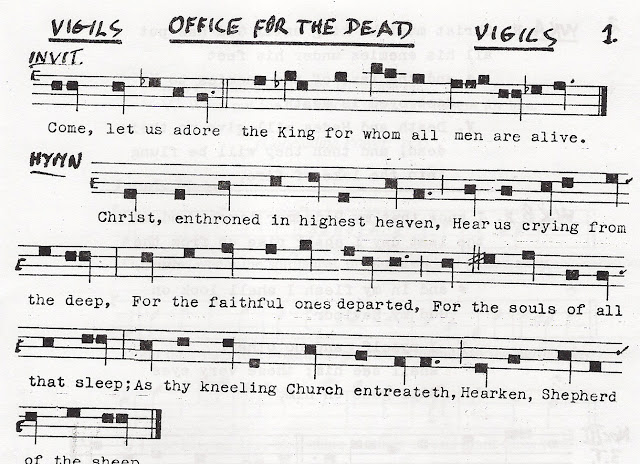Israeli Embassy Welcomes Pope's "Positive View"
New Book "Exonerates" Jews From Death of Jesus
ROME, MARCH 4, 2011 (Zenit.org).- The Israeli embassy to the Holy See "welcomes wholeheartedly" Benedict XVI's new book, in which the Pope reiterates that the Jews are not guilty of Jesus' death.
A statement released Thursday in English and Italian from the Israeli embassy responded to excerpts of "Jesus of Nazareth" that were released to the press this week. The book will be available March 10.
"We welcome wholeheartedly the emphasis reiterated by the Pope in his new book, in which he exonerates the Jews from responsibility for the death of Jesus," the statement says.
The embassy itself noted that this is not new teaching. In 1965, the Second Vatican Council declaration "Nostra Aetate" already explicitly stated that "what happened in His passion cannot be charged against all the Jews, without distinction, then alive, nor against the Jews of today."
The embassy observed that the book is consistent with "the Church's official policy" and added that "Jesus of Nazareth" is a "confirmation of the Pope's known positive stance towards the Jewish People and the State of Israel."
Jesus' accusers
"Jesus of Nazareth" takes up the question of the Jews' role in Jesus' death in Chapter 7, Section 3. The Pope asks: "Now we must ask: Who exactly were Jesus’ accusers? Who insisted that he be condemned to death?"
He goes on to look at the various answers offered by the Gospels.
The Pontiff explains: "According to John it was simply 'the Jews'. But John’s use of this expression does not in any way indicate -- as the modern reader might suppose -- the people of Israel in general, even less is it 'racist' in character. After all, John himself was ethnically a Jew, as were Jesus and all his followers. The entire early Christian community was made up of Jews. In John’s Gospel this word has a precise and clearly defined meaning: he is referring to the Temple aristocracy. So the circle of accusers who instigate Jesus’ death is precisely indicated in the Fourth Gospel and clearly limited: it is the Temple aristocracy -- and not without certain exceptions, as the reference to Nicodemus (7:50–52) shows."
Benedict XVI also clarifies the phrase from Matthew, when "the 'whole people' say: 'His blood be on us and on our children' (27:25)."
He says, "[T]he Christian will remember that Jesus’ blood speaks a different language from the blood of Abel (Heb 12:24): it does not cry out for vengeance and punishment; it brings reconciliation. It is not poured out against anyone; it is poured out for many, for all. 'All have sinned and fall short of the glory of God . . . God put [ Jesus] forward as an expiation by his blood' (Rom 3:23, 25). Just as Caiaphas’ words about the need for Jesus’ death have to be read in an entirely new light from the perspective of faith, the same applies to Matthew’s reference to blood: read in the light of faith, it means that we all stand in need of the purifying power of love which is his blood. These words are not a curse, but rather redemption, salvation."
--- --- ---
"We welcome wholeheartedly the emphasis reiterated by the Pope in his new book, in which he exonerates the Jews from responsibility for the death of Jesus," the statement says.
The embassy itself noted that this is not new teaching. In 1965, the Second Vatican Council declaration "Nostra Aetate" already explicitly stated that "what happened in His passion cannot be charged against all the Jews, without distinction, then alive, nor against the Jews of today."
The embassy observed that the book is consistent with "the Church's official policy" and added that "Jesus of Nazareth" is a "confirmation of the Pope's known positive stance towards the Jewish People and the State of Israel."
Jesus' accusers
"Jesus of Nazareth" takes up the question of the Jews' role in Jesus' death in Chapter 7, Section 3. The Pope asks: "Now we must ask: Who exactly were Jesus’ accusers? Who insisted that he be condemned to death?"
He goes on to look at the various answers offered by the Gospels.
The Pontiff explains: "According to John it was simply 'the Jews'. But John’s use of this expression does not in any way indicate -- as the modern reader might suppose -- the people of Israel in general, even less is it 'racist' in character. After all, John himself was ethnically a Jew, as were Jesus and all his followers. The entire early Christian community was made up of Jews. In John’s Gospel this word has a precise and clearly defined meaning: he is referring to the Temple aristocracy. So the circle of accusers who instigate Jesus’ death is precisely indicated in the Fourth Gospel and clearly limited: it is the Temple aristocracy -- and not without certain exceptions, as the reference to Nicodemus (7:50–52) shows."
Benedict XVI also clarifies the phrase from Matthew, when "the 'whole people' say: 'His blood be on us and on our children' (27:25)."
He says, "[T]he Christian will remember that Jesus’ blood speaks a different language from the blood of Abel (Heb 12:24): it does not cry out for vengeance and punishment; it brings reconciliation. It is not poured out against anyone; it is poured out for many, for all. 'All have sinned and fall short of the glory of God . . . God put [ Jesus] forward as an expiation by his blood' (Rom 3:23, 25). Just as Caiaphas’ words about the need for Jesus’ death have to be read in an entirely new light from the perspective of faith, the same applies to Matthew’s reference to blood: read in the light of faith, it means that we all stand in need of the purifying power of love which is his blood. These words are not a curse, but rather redemption, salvation."
--- --- ---
Pope at Rome Synagogue Excerpt of "Jesus of Nazareth": Christ's Accusers"Who Insisted That He Be Condemned to Death?"ROME, MARCH 4, 2010 (Zenit.org).- Here is an excerpt from Benedict XVI's book "Jesus of Nazareth: Holy Week From the Entrance into Jerusalem to the Resurrection," which is scheduled to be released worldwide March 10. The excerpt comes from Chapter 7, Section 3, titled "Jesus Before Pilate." Ignatius Press is the publisher of the volume in English. * * *
--- --- --- On the Net: "Jesus of Nazareth": www.ignatius.com/Products/JN2-H/jesus-of-nazareth.aspx |



